There is a lot of emphases placed on the preparing, germinating, and growing portions of marijuana plants. But what about the harvest? This can either make or break your end result, making it one of the most important aspects of growing marijuana. Nonetheless, many growers get to this step unprepared and unsure of how to proceed.
The main aspects that need to be considered are the timing of the harvest as well as the actual process of harvesting. Timing can be tricky because harvesting too early or too late can have negative consequences on your yield, but finding the exact sweet spot in the timing can be really difficult sometimes.
There are a number of methods for figuring out when exactly to harvest your marijuana buds. This guide will explain to you those methods as well as all the tools you will need and potential difficulties you can expect.
Be sure to download my free Marijuana Grow Bible for in depth information on the complete grow process.
Harvesting time begins when your marijuana plant has gone through the whole flowering phase and is starting to decline in its overall health. You can notice this early enough in a variety of ways, one of which includes seeing the pistils, which are turning a reddish color.
The stem will also get broader, and the resin on your marijuana plant’s buds will start darkening to a brown color. The leaves will even begin turning yellow. If you know your plant has gone through its whole flowering phase and you are starting to see these symptoms, the harvesting time has probably come.
People’s opinion on the perfect time to harvest does vary, so you must go through a certain amount of trial and error to know what works best for you. If you have ever harvested plants that have fruits or vegetables, you will already be somewhat familiar with how this works.
Let’s look at some of the basic facts about different strains and different ways to determine the right time to harvest.
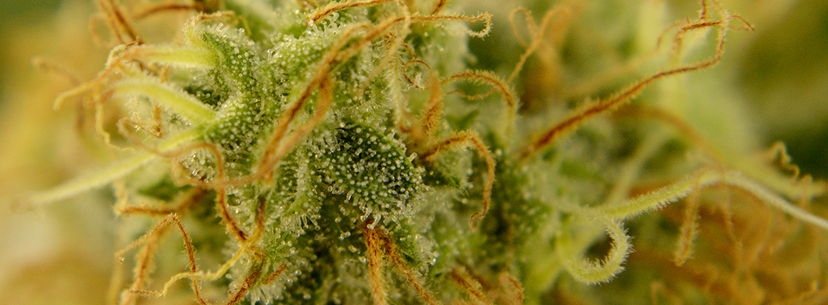
Flowering time
Indica: the harvest time comes after about 8 weeks of the flowering phase
Sativa: the harvest time comes after about 10 weeks of the flowering phase
Autoflower: the harvest time comes after about 10 weeks from seedling to budding
Pistils
When the pistils are 50-70% brown, you can expect young, light weed.
When the pistils are 70-90% brown, you can expect ripe, heavy weed.
When the pistils are 90-100% brown, you can expect sharp, narcotic weed.
Trichomes
When the trichomes are clear, you should wait a while longer.
When the trichomes are milky white or amber, the buds are ready for harvest.
When the trichomes are all amber, the buds are overripe.
A magnifying tool of some kind is going to be necessary to view the trichomes of your plant and see if they are glittery and filled with resin. If they are, you can rest assured knowing that your marijuana plants are ready to be harvested.
Magnifying Tools
Lots of different tools for magnification exist that are going to help you take a closer, more detailed look at your marijuana plants. Any of these magnifying devices will be good enough to tell if your marijuana plants are ready for harvest, but it is important to understand a fair amount about each tool to know what will work best for your lifestyle and your growing operation.
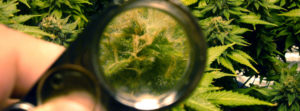
Jeweler’s Loupe
This works the best for people who are trying to save money. It is quite basic — nothing particularly fancy, but it will certainly give you enough information to decide if it is a day to harvest or a day to wait. If you are someone who wants tons of details and information, however, then a Jeweler’s Loupe may not be for you.
Handheld Magnifier
This is one step up from a Jeweler’s Loupe. It will zoom in to give your buds an even closer look — but sometimes its impressive strength comes at a cost, as it makes it difficult to focus on the buds themselves.
Digital Microscope
This is the top shelf of magnification. It is the most expensive of the three options listed, but it will certainly answer any questions you might have about whether or not your marijuana plants are ready to be harvested. It connects to a laptop to view and process the information gathered, making the learning curve a little steep but completely worth it.
Deciding when to harvest is more than just a “yes” or “no” question answered by microscopes, however. A later harvest is going to give you the highest yield and the most potent buds, but it can be extremely strong and overpowering in terms of flavor and smell for a lot of people. Growers usually use the pistils to decide when is best for them to harvest.
When using pistils, many growers choose to harvest their marijuana plants as soon as the pistils are starting to redden. Some wait until the pistils are mostly red, and the resin has darkened quite a bit. Waiting too long not only could make the resulting weed too strong, but it could also lower the effectiveness of the ingredients in it.
Looking at the resin is a valuable way to decide if your marijuana plants are ready for harvest. The glands that have resin covering them will increase in size, then get really swollen looking and eventually begin looking very misshapen.
Resin darkens as your plants get older, going from a clear color to a more opaque amber color. The plant is often ready to harvest while the resin is still see-through and sticky. As it darkens and changes to a more amber-like color, harvesting will need to become immediate because the ingredients will begin breaking down and weakening.
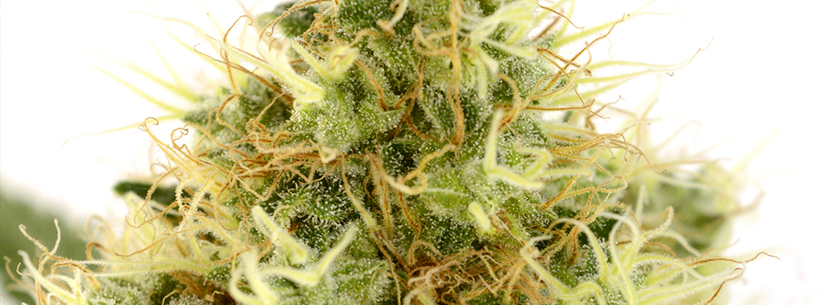
Some people prefer to simply use timing as their method of deciding when to harvest their marijuana plants. While this may not be as precise of a science, it could end up being easier to remember and more consistent for the grower. The important thing to know about using timing is that you should do your research on the specific seeds that you are growing.
Besides the strain choice, the actual growing environment your marijuana plants are growing in can make a huge difference in timing of the harvest. Keep it in mind when you are establishing the exact time for which to harvest your marijuana plants. Let’s look at some different pieces of information for the various strains out there.
Indica
People who are growing a strain of marijuana that is Indica or mostly Indica can usually expect a flowering time of around eight weeks long. Harvesting at the end of September is usually the best time for Indica growers to harvest, assuming they started growing at the right time.
Sativa
Sativa marijuana plants have longer flowering times, lasting approximately three months (12 weeks). There are a number of haze strains, however, that flower in more like 9 to 10 weeks. Seeds that have been ordered online should be researched diligently to be certain of the flowering time. Sativas, generally speaking, are ready to harvest by the end of October.
Autoflowering strains
Autoflowering strains are much easier to predict timing-wise than other strains. This is because they do not undergo their life cycle changes based on lighting, like every other strain of marijuana does, but rather they go by timing. You can start the timer as soon as you see the first seedlings poking out above the soil, and then you have exactly ten weeks until the harvesting should be done.
For any strain of marijuana, calculating the time ahead of time might not give you the exactly perfect conditions for when to harvest your marijuana plants, but it certainly can give you a better ballpark idea of the best time to do so, rather than playing a guessing game.
Our mega article on harvesting contains even more tips on what to look for. Be sure to check it out!
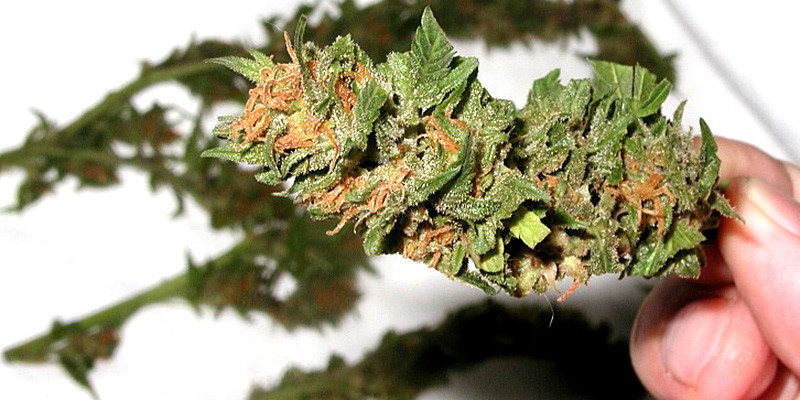
Checking the pistils is by far the easiest way to tell if your marijuana plants are ready to be harvested. The coloring is what is most important with the pistils of your marijuana plants. Pistils that are mostly white indicate it is too early to harvest. Pistils that are all brown or reddish show that the best time to harvest has already passed, so it’s important to harvest as soon as you possibly can.
Pistils that are at least two-thirds brown are the best for harvesting. Of course, some growers choose to harvest at different times, but that all has to do with personal preference. You, too, will quickly figure out what harvest time is best for your own personal preferences.
The bud quality is highly dependent on when you decide to harvest your marijuana plants. Buds that were harvested earlier are going to end up giving the user a more stimulating effect, but buds that were harvested during their peak potency are going to be hazier and more numbing.
If you haven’t harvested marijuana before and you aren’t sure when the proper time to do it is, you can simply harvest each of your marijuana plants at a different time. Make sure you keep good track of when you harvested what, so you can be informed for the next time around as to what you prefer the most.
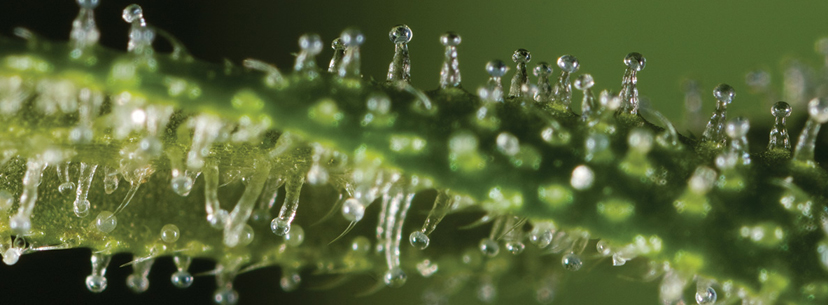
Trichomes are another aspect of marijuana plants that come in handy when determining when the best harvest time is going to be. All you have to do is look at the trichomes and see what they look like. The trichomes that have a small ball on the top of them are the ones you need to be looking at. That little ball stores a lot of the THC and other cannabinoids, making it crucial.
The whole goal is to be able to see how much THC is inside, and basically harvest when the most THC possible is packed in there. It is very unlikely that you would ever be able to determine that with just your naked eye — you should likely employ the use of one of the above listed magnifying tools.
The trichomes will look different, so let’s see what exactly shows that your buds are ready for the harvest.
Clear, white hairs
When the trichomes are clear and whitish, they are certainly not even close to harvesting quality. If you did harvest now, the yield at the end would not be particularly impressive. Wait until a minimum of half of the trichomes have darkened and aren’t quite as straight as they were before.
Half clear or cloudy trichomes
This is still on the early side in terms of timing the harvest. Your buds will still grow to be larger and more potent, although they are already usable now. This would produce an energetic, stimulating high, making the user feel speedy. If you wait, you can expect the odor to become stronger as well.
Mostly cloudy trichomes
This is the look that marijuana growers strive for. When the trichomes are mostly cloudy, the THC levels are the highest, meaning the yield is as high as it gets. Once the trichomes look like this, you should harvest your marijuana plants as soon as you can. When you harvest marijuana at this time, the resulting weed is going to lead to euphoria and pain relief. In other words, it’s the most intense high possible — you will get the most bang for your buck.
Amber and cloudy trichomes
The THC levels will have decreased at this point, but the CBN levels will have increased even more. That leads to an anti-anxiety feeling of relaxation with the high from weed harvested at this time, so for certain marijuana users, this makes perfect sense. This is a couchlock type of high, more of a narcotic. At this point, 70 to 90 percent of the trichomes will all have darkened in color.
There are even more precise details for determining when to harvest based on the trichomes’ coloring. Some marijuana plants can also be harvested during a certain time, with other plants harvested later or earlier, making for several weed options after you have dried and cured the resulting product. Just be sure to take proper notes and use labeling, so you get the effect you desire each time you smoke.
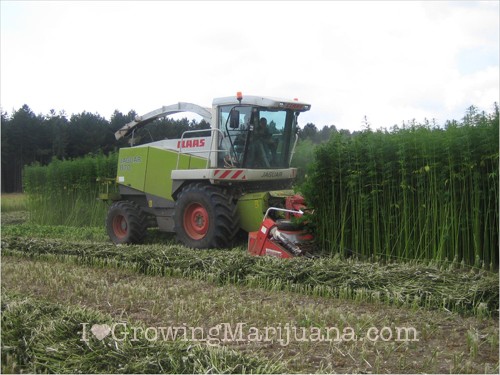
Harvesting is not terribly difficult, but it’s important to have some grasp of the basics before jumping in and starting to remove plant matter. First, you are going to need to prepare your drying room before doing anything else. Hang a wire at the top (or use your grow room and switch wire out with the grow lamp you had been using) and hang your marijuana plants upside-down from it, then aim a fan at the air right beneath the buds.
Use some strong scissors or shears for the next step. You should also have isopropyl alcohol in a dish so that your hands and scissors can be cleaned of the very sticky resin. You should wear gloves for when you are cutting the plant matter — you will be surprised at how gooey and sticky it can get.
It’s also important to keep in mind the reasoning behind this method. You are essentially trying to allow the moisture to slowly evaporate from the plant as its remaining chlorophyll breaks down. Chlorophyll does not taste good, so it’s important to allow it all to break down before your plant is dry and ready to be smoked. This is why we dry it slowly, keeping the room dark and the temperature mild.
Generally speaking, the drying process lasts between a week and a half to two weeks. You should continue to pay close attention to your plants as they dry, however, because the development of mold could easily ruin everything. Keep the humidity low to help avoid the development of mold.
Be sure to download my free Marijuana Grow Bible for more in depth information on harvesting, drying and curing.
Happy growing!
Robert
www.ilovegrowingmarijuana.com
